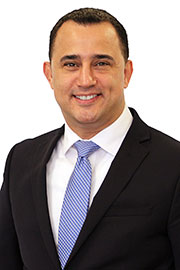- Feb/21/24 11:30:00 a.m.
Speaker, tomorrow is Human Trafficking Awareness Day in Ontario and across the country. As many members of this House know, human trafficking is a cruel and vicious crime that deprives individuals of their freedom, dignity and basic human rights.
Here in Ontario, the most common form of human trafficking is sex trafficking, with children and young women being the most targeted. I find it deeply troubling to see that the average age of recruitment into sex trafficking is just 13 years of age.
Victims are lured by traffickers who pretend to be their friends or romantic partners, often gaining their trust and then manipulating them and coercing them into being trafficked. In many cases, the victims believe that their traffickers care for them, making it all the more devastating when they’re exploited and abused.
Victims are isolated from their families as well as their friends. They can be moved away from home, left with no access to money or ID, and can have loans taken out in their names, making it very hard for them to leave their traffickers.
That’s why our government supported the passage of legislation which protects survivors of human trafficking from fraudulent debts incurred by traffickers in their name—and I want to thank the member for putting that initiative forward.
Speaker, human trafficking is a deeply troubling, multi-faceted problem that demands nothing less than a comprehensive, whole-of-government approach, and our government is taking action to fight it.
In March 2020, we launched a comprehensive, $307-million strategy to combat human trafficking. The strategy focuses on raising awareness, protecting victims, intervening early, supporting survivors and holding offenders accountable. Our strategy includes key actions in law enforcement, led by my colleague the Solicitor General, who will say a few words right after me.
In the transportation sector, our government is taking actions led by my colleague the Minister of Transportation, including investing in training for truck drivers, such as:
—the program developed by the Women’s Trucking Federation of Canada to help drivers spot the warning signs if they encounter someone who is being trafficked;
—placing decals on buses and trains operated by Metrolinx and Ontario Northland, so anyone who needs help is aware of the Canadian Human Trafficking Hotline number; and
—training drivers and operators of public transportation vehicles to be aware of the signs of human trafficking and where to direct someone if they need help.
We’re also taking comprehensive actions to keep students in our schools safe—online and in person—from violent offenders. This work is being led by my colleague the Minister of Education, who introduced a first-of-its-kind policy in Canada that requires all school boards to have an anti-sex-trafficking protocol in place to protect students and disrupt trafficking networks. He was the first minister in Canada to mandate anti-human-trafficking knowledge for students in the health and phys-ed curriculum in 2019, and he invested more than $1.6 million this year to help community partners and school boards deliver tools and resources to support student safety initiatives, including addressing victimization and violence, to help prevent sex trafficking. He also implemented mandatory training for all educators and staff to recognize, identify, respond to and prevent sex trafficking.
Speaker, our anti-human-trafficking strategy represents the largest total investment in dedicated anti-human-trafficking services and supports in the country. This includes specialized supports designed to protect children and youth from sex trafficking, like the Children at Risk of Exploitation Units, or CARE units. These units are intervention teams that pair up police officers with child protection workers and Indigenous liaisons who work collaboratively to identify and locate children experiencing or at risk of trafficking, connect them with culturally relevant supports, and investigate and hold offenders accountable.
In 2021, we launched Ontario’s first CARE units in the city of Toronto and in Durham region, with an investment of $11.5 million over three years. And these units are changing lives every single day. Between April 2022 and March 2023, they supported 218 children and youth who had experienced or were at risk of sex trafficking, and 136 of them were under the age of 15. These are young people who, without the intervention of the CARE unit, might not have known how to get help or that there was a way out of trafficking.
Our next priority is to establish a CARE unit in a northern community where Indigenous youth are disproportionately impacted by sex trafficking. I am pleased to report that we have begun community engagements on a new CARE unit in the Kenora region, which I announced last month with my colleague the Minister of Indigenous Affairs. Our discussions with Indigenous representatives, community-based organizations, children’s aid societies and police services will help us develop an intervention model that reflects the unique needs of the region, and it will ultimately help protect more children, youth and Indigenous women and girls from this horrible crime.
Since we are approaching the final year of our anti-human trafficking strategy, we’re starting a review to inform our next steps. This review will involve hearing from the public, survivors of human trafficking and family members, as well as Indigenous communities and organizations, and front-line service providers. Our goal is to ensure that Ontario’s strategy is as effective as possible so we can continue making progress towards ending this crime.
As we prepare to mark Human Trafficking Awareness Day tomorrow, I’d like to recognize the tireless work of community organizations and front-line workers across the province providing services and supports to survivors and people at risk. We’re deeply grateful to the hundreds of service providers working across Ontario. From early intervention to crisis supports, their efforts directly contribute to the safety and wellness of the individuals and communities they serve. Thanks to their commitment and dedication, victims and survivors have access to the critical supports they need as they heal and rebuild their lives. Today, we join our voices with theirs to shed light on human trafficking.
I also encourage my colleagues in the Legislature to learn the Canadian Human Trafficking Hotline number: 1-833-900-1010. Please post it in your offices and share it with people in your communities. It could help someone in need or even save their life.
Speaker, I believe that, together, we can build a future where all Ontarians are free to live a life without the fear of violence, abuse and exploitation.
- Hear!
- Rabble!
- Feb/21/24 3:20:00 p.m.
It’s a real honour to speak on this upcoming February 22, which is the Canadian anti-human trafficking day—la journée contre la traite des personnes.
My first encounter with somebody who had been trafficked was at the beginning of the pandemic. There was a family staying in a tent under a bridge in my riding. The mother and daughter had been evicted from their home in the 905, and they had been moved into a shelter in downtown Toronto. While they were in there, the 19-year-old daughter had been kidnapped and trafficked for several months. While she was trafficked, she had been hog-tied and shot with fentanyl to make her addicted to fentanyl so that they would have control over her. They eventually escaped. This was at the beginning of the pandemic. The mother got her back, and the mother and mother’s boyfriend and the daughter were staying in a tent. There was no other place for them to go.
So we need to address root causes, and I’m going to be talking about addressing root causes in this.
There were 4,000 incidents of human trafficking that were reported to police between 2012 and 2022, and 94% of the victims were women and girls, and the average age of recruitment, as we just heard from the government side, is 13 years old. It’s an absolutely despicable crime, and it must be stopped at all levels.
I want to thank my colleagues who were involved in the passing of Bill 41, which is the Protection from Coerced Debts Incurred in relation to Human Trafficking Act. This bill is really important because, besides the sexual exploitation that happens with trafficking, there’s also financial exploitation. Traffickers will often go into a bank and take out a credit card in their victim’s name, and then that victim, after they escape, is left with that debt and the bad credit rating. This is how Richard Dunwoody, who is a resident in my riding—he came across survivors of human trafficking in shelters, and they could not get out of the shelters because of this financial debt. Because their credit rating had been destroyed, they weren’t able to rent a new place. What came of that is a program to support survivors, but also this legislation.
This legislation—if I could make a request to the government—has been passed. We’re waiting for the regulations so that it can be implemented. Those regulations cannot come quickly enough, because right now survivors with these financial debts are denied housing, they’re denied access to school, they’re harassed by credit agencies, and they’re often taken to court. So this legislation needs to get through as quickly as possible.
I also want to talk about some solutions. When I was talking with a woman who works with survivors of human trafficking earlier today, she said you need to address the root causes—poverty, housing insecurity and homelessness—because shelters and encampments are places that traffickers go to recruit and to kidnap people, just like that young woman I met at the beginning of the pandemic.
The other thing she said is that we need to provide escape routes. She said she often gets calls from a survivor, a victim of human trafficking, who wants to escape, and they’re looking for a safe place to go, but when the agency phones, every shelter is full. So they tell the victim this, and the victim says, “I’ll just stay with my trafficker.” If we don’t have an escape route, they can’t escape. The courage that it takes to escape human trafficking is really remarkable, and we need to reward it. We need to make sure that there’s a pathway, and these pathways have to be cognizant of the supports that people who have been trafficked need. As the woman said to me, trafficking is often associated with trauma and substance abuse. The women are often forced to have sex with five to 10 people a night. They’re up all night. The first thing they need to do when they escape is to detox, and there’s a shortage of detox beds in this province. We need low-barrier housing accommodation for the survivors when they’re escaping. The other thing the agent said they need is stable funding.
I heard from the government side that they’re reviewing—there was a five-year, $307-million grant to address human trafficking, and this is under review, but it expires in 2025. The agencies that support people who have been trafficked, who are survivors of human trafficking—to bring an end to human trafficking, those agencies need stable funding. They need to renew leases. They need to retain their staff. They need to do training programs. So it’s absolutely vital that that funding be extended and that the promise of that extended funding be made as soon as possible.
- Hear!
- Rabble!



